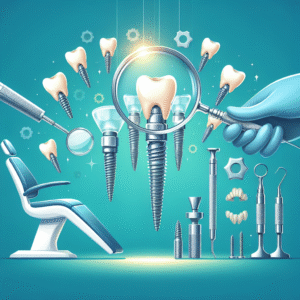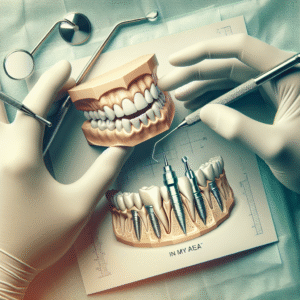All-on-4 Dental Implant Procedure Pain Level: What to Expect
Dental implant procedures have revolutionized restorative dentistry, offering patients a permanent solution for missing teeth. Among the most advanced techniques is the All-on-4 dental implant system, which provides full-arch dental implants with minimal downtime. However, one of the most common concerns patients have is about the pain level associated with the procedure. This article explores what to expect in terms of discomfort, pain management options, and how innovations like teeth-in-a-day / same-day implants, implant-supported dentures, zygomatic implants, and bone grafting for dental implants influence the overall experience.
Understanding the All-on-4 Procedure
The All-on-4 technique involves placing four dental implants in the jawbone to support a full arch of prosthetic teeth. Unlike traditional implants that may require six to eight implants per arch, this method maximizes bone support with fewer implants, reducing surgical complexity and recovery time.
Key Benefits of All-on-4 Implants:
- Fewer implants needed compared to traditional methods.
- Immediate functionality with teeth-in-a-day / same-day implants.
- Reduced need for bone grafting in many cases.
- Stable, long-term solution compared to removable dentures.
Pain Level During the All-on-4 Procedure
1. During the Surgery
Since the procedure is performed under anesthesia, patients typically feel little to no pain during the surgery itself. Dentists use one or a combination of the following anesthesia options:
- Local anesthesia (numbing the treatment area).
- Sedation dentistry (oral sedatives or IV sedation for relaxation).
- General anesthesia (for patients with severe dental anxiety).
Most patients report feeling pressure rather than sharp pain during implant placement. The use of precision-guided surgical techniques further minimizes discomfort.
2. Post-Surgical Pain
After the anesthesia wears off, patients may experience mild to moderate discomfort, swelling, and bruising. This is a normal part of the healing process and usually peaks within the first 48–72 hours. Common post-op symptoms include:
- Soreness at the implant sites.
- Swelling in the gums and face.
- Minor bleeding (should subside within a day).
Pain levels vary depending on individual pain tolerance, the complexity of the case, and whether additional procedures like bone grafting for dental implants or zygomatic implants (used in cases of severe bone loss) were required.
Pain Management Strategies
To ensure a comfortable recovery, dentists recommend the following:
Medications
- Over-the-counter pain relievers (e.g., ibuprofen or acetaminophen).
- Prescription painkillers (for severe cases, though rarely needed).
- Antibiotics (to prevent infection).
Home Care Tips
- Ice packs to reduce swelling.
- Soft foods to avoid irritating the surgical sites.
- Saltwater rinses (after 24 hours) to promote healing.
Most patients find that their discomfort significantly decreases within a week.
Factors Influencing Pain Levels
1. Bone Density and Grafting Needs
Patients with sufficient jaw bone density typically experience an easier recovery. However, those requiring bone grafting for dental implants may have a longer healing period and slightly more discomfort due to the additional surgical site.
2. Use of Advanced Techniques
- Zygomatic implants (anchored in the cheekbone instead of the jaw) are an alternative for patients with extreme bone loss. While the placement is more complex, pain levels post-surgery are comparable to traditional implants.
- Implant-supported dentures secured with All-on-4 implants eliminate the gum irritation caused by conventional dentures, improving long-term comfort.
3. Immediate vs. Staged Loading
- Teeth-in-a-day / same-day implants allow patients to leave with a temporary prosthesis immediately. While this offers convenience, some may experience slightly more initial discomfort due to the immediate pressure on the implants.
- A staged approach (delayed loading) may reduce initial soreness but extends the treatment timeline.
Long-Term Comfort of All-on-4 Implants
Once healed, All-on-4 implants provide a stable, pain-free alternative to removable dentures. Unlike traditional dentures, which can cause gum sores and shifting, implant-supported dentures fuse with the jawbone, preventing discomfort while eating or speaking.
Advantages Over Traditional Dentures:
- No slipping or clicking while talking.
- Restored biting force for better chewing.
- Prevents bone loss, maintaining facial structure.
Conclusion
While the All-on-4 dental implant procedure involves some post-surgical discomfort, advancements in anesthesia, surgical techniques, and pain management make it a manageable experience for most patients. The use of full-arch dental implants, zygomatic implants, and teeth-in-a-day / same-day implants has further streamlined the process, reducing recovery time and improving outcomes.
If you’re considering All-on-4 implants, consult with a qualified dentist to discuss your specific needs, including whether bone grafting for dental implants is necessary. With proper care, you can enjoy a pain-free, fully functional smile in no time.
Frequently Asked Questions
-
Is the All-on-4 dental implant procedure painful?
No, the procedure is performed under anesthesia, so you won’t feel pain during the surgery. Some discomfort or mild soreness may occur afterward, but it’s manageable with prescribed medications. -
How long does pain last after the All-on-4 procedure?
Discomfort typically lasts a few days to a week. Swelling and tenderness may persist for up to two weeks, but over-the-counter or prescribed pain relievers can help ease symptoms. -
What can I do to minimize pain after the surgery?
Follow your dentist’s aftercare instructions, take prescribed medications, apply ice packs to reduce swelling, eat soft foods, and avoid strenuous activities to promote healing. -
Are All-on-4 implants more painful than traditional dentures?
While the initial recovery involves some discomfort, All-on-4 implants provide long-term comfort and stability compared to traditional dentures, which can cause gum irritation and sore spots over time.




